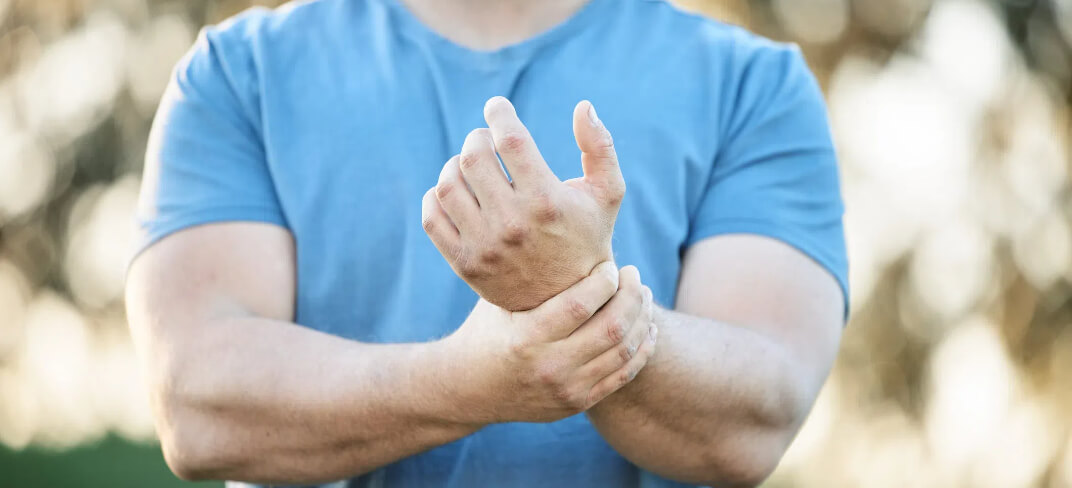Preventing Common Summer Orthopaedic Injuries

Editor’s Note: This article was originally published on 13 September 2024 and updated on 8 July 2025.
Cycling trips, swimming, beach volleyball, tennis, and hiking — summer is the perfect season for outdoor sports and physical activity. However, even these enjoyable physical activities involve physical effort and carry a risk of orthopedic injuries, especially if not approached with proper preparation. That’s why it’s essential to stay alert, pay attention to body movements and take simple preventive measures. In this article, we’ll explore the most common summer injuries and how to prevent them effectively.
Here are some tips to avoid orthopaedic injuries:
- Use correct technique and warm up before participating in any activity.
- Maintain proper posture.
- Keep a healthy body weight.
- Exercise regularly.
- Do not ignore pain or an injury; stop and listen to your body.
- Consult your doctor annually and in case of injury.
- Wear comfortable, supportive shoes appropriate for the activity you are doing.
- Wear gloves when necessary.
- Pay attention to cuts and keep your tetanus vaccinations up to date to prevent infections.
Overhead Shoulder Injury
Shoulder injuries from overhead movements, i.e., moving the arm above the head, typically involve the rotator cuff, a crucial structure that can be damaged by movements that tear muscles or tendons around the shoulder joint. Tendinitis, inflammation, or irritation of the tendon can develop over time, causing pain and requiring treatment.
Sports such as swimming, tennis, volleyball, and golf, as well as activities like weightlifting, involve repetitive overhead movements that stress the arm above the head. The rotator cuff is essential for maintaining the balance of the shoulder’s ball-and-socket joint. When these muscles are injured or overused, they can cause pain and movement difficulties, compromising joint balance. Consequently, there is a higher risk of shoulder injuries like labral tears and rotator cuff tears.
To alleviate pain and resume daily activities within a few weeks, rest and immobilization of the shoulder area are recommended, along with anti-inflammatory medications. Warm compresses help soothe stiffness and relax muscles, while cold packs are effective for numbing pain and reducing swelling.
If the pain persists for more than three to five days, further evaluation is recommended. A physical exam is the first step in determining the strength of the muscles around the arms and shoulders and the range of motion. Imaging tests such as X-rays, MRI, or ultrasound may be required.
The specialist can differentiate between overhead strain injuries and other shoulder injuries by talking to the patient, asking how the injury occurred, what activities cause pain, and what has been done previously. The physical exam provides critical information to distinguish between different injuries. Bone spurs, fractures, and even arthritis could be causing or contributing to the discomfort.
Symptoms of a rotator cuff injury may include:
- Dull pain or stiffness in the shoulder.
- Pain when lifting the hand or arm above the head, making it difficult to perform simple daily activities.
- Pain accompanied by weakness in the arm.
- Pain that disrupts sleep when lying on the affected side.
- Pain that wakes you up at night.
- A feeling of instability in the shoulder.
Hand Injuries
During summer, hands are particularly exposed to injuries while engaging in many outdoor activities: playing ball, holding children, pulling weeds, and lifting weights. Bruised or dislocated fingers, fractures, and sprains in hands and wrists are among the most common injuries.
The hand is composed of 27 thin bones, with few muscles and fat to protect them, and the wrist, with its delicate two-part joint, allows for complex movements but is easily prone to injury.
When a finger is bruised or crushed, it is often because it collided with something while fully extended. The joint swells and becomes painful, making it difficult to bend the finger. Treatment involves rest, ice, and immobilization of the injured finger with the adjacent one. Normal activities can be resumed almost immediately.
A finger dislocation occurs when a force displaces the joint, usually the middle one. This causes intense and sudden pain, and the joint appears out of place. In these cases, a doctor must reposition the joint correctly. Minor dislocations allow for a quick return to activities, while more severe ones may require surgery and longer recovery times.
Wrist pain can be caused by inflammation, tendinopathies, or small tendon tears. Most wrist sprains heal on their own over time. To treat them, wrap the wrist, rest it for at least 48 hours, and apply ice for 20 minutes every few hours, keeping it straight during recovery.
Before starting any activity, it is helpful to warm up wrists and fingers with circular movements, opening and closing fingers, and stretching wrists forward and backward. Taking frequent breaks during repetitive activities helps prevent injuries.
Orthopaedic Private First Aid
UPMC Salvator Mundi International Hospital provides a private Urgent Care service for orthopedic and trauma-related emergencies, available 7 days a week from 7:30 AM to 7:00 PM - no appointment necessary.
Learn more about our Private First Aid and Orthopaedic and Traumatology services.